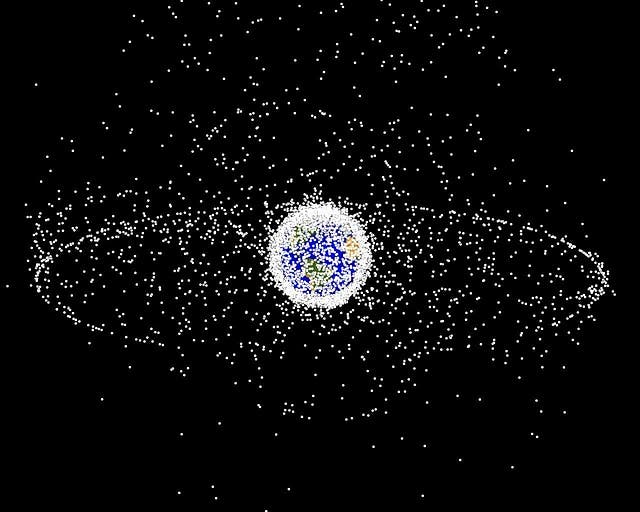
The Russians apparently have been unintentionally playing the galactic version of bumper cars. It has been reported that the Chinese satellite Yunhai 1-02 broke apart into several pieces in March after it whacked into space junk from part of a Russian Zenit-2 rocket.
Harvard astronomer Jonathan McDowell spotted the wreckage recently in a data log from the U.S. Space Force. The Force’s sensors found the wreck in mid-March, and updated their space-debris catalog with the comment regarding the Russian piece – Object 48078 – “collided with satellite.” According to McDowell, the Russian piece was part of a Zenit-2 rocket that launched a spy satellite in 1996.
McDowell found the collision by going back through the orbital data and discovered that Object 48078 and Yunhai 1-02 passed within just a little more than a half-mile of one another at the same time that the Chinese satellite broke apart. That distance is just within the margin of error for bumping distance of two objects zipping around the planet faster than a bullet. According to McDowell, the crash created at least 37 pieces of additional space rubble.
While wounded, Yunhai 1-02 seems to still be trucking along, as amateur radio operators are supposedly still picking up signals according to McDowell.
Currently, more than 29,000 of satellites and space debris tracked by Space Surveillance Networks are circling Earth. Close to 2,000 of these belong to SpaceX who plans to have 12,000 first-generation satellites orbiting our planet after all is said and done. According to Space.com, the company’s satellites are involved in almost 1,600 close encounters every week and soon will be involved in 90% of close encounters in low-earth orbit (LEO).
Much more debris — too small to be tracked, but large enough to threaten human spaceflight and robotic missions — exists in the near-Earth space environment. Since both the debris and spacecraft are traveling at extremely high speeds (approximately 15,700 mph in LEO), an impact of just a tiny piece of orbital debris with a spacecraft could create big problems.
Even tiny paint flecks can damage a spacecraft. A number of space shuttle windows were replaced because of damage caused by material that was analyzed and shown to be paint flecks. In fact, millimeter-sized orbital debris represents the highest mission-ending risk to most robotic spacecraft operating in LEO.
February 2009 saw the worst collision to date when the U.S. telecommunication satellite Iridium 33 rammed into the defunct Russian military satellite Kosmos-2251. That incident, in turn, spawned more than 1,000 individual incidents.
This has all prompted the company Rocket Lab to put into motion plans to test space junk removal technologies for the Finnish company Aurora Propulsion Technologies. In the fourth quarter of this year, the company will be launching the cubesatallite AuroraSat-1 to LEO using water-based propellant and mobility control of its Resistojets that can assist CubeSats with detumbling capabilities and propulsion-based attitude control.
Taking into account debris of all sizes, currently, there are approximately 130 million objects of space debris all told.






